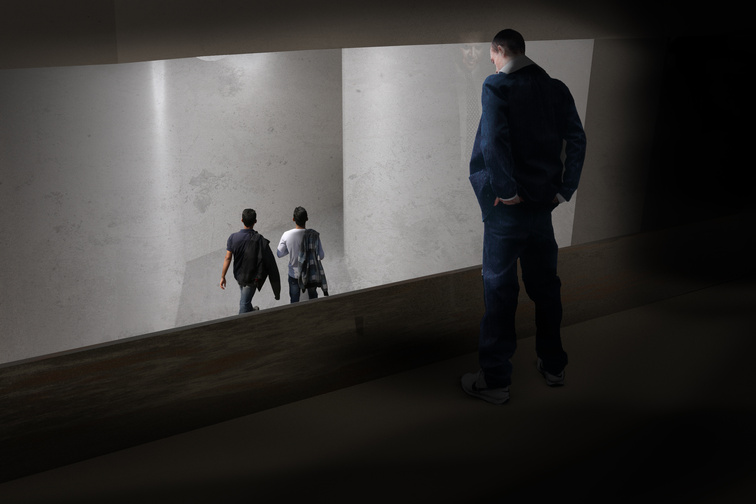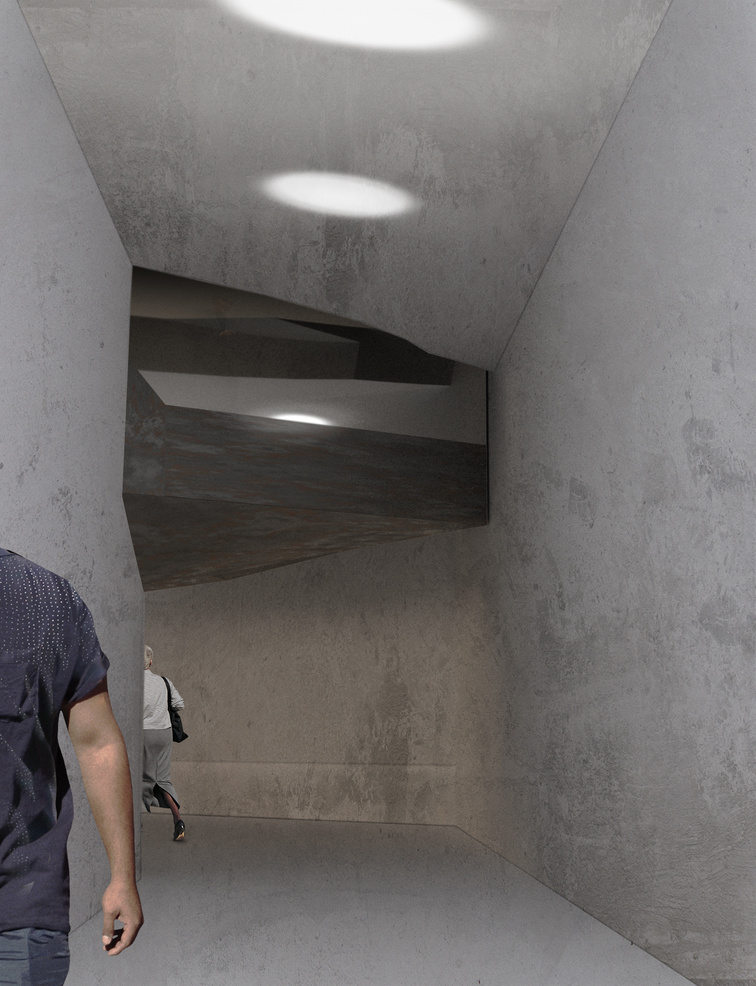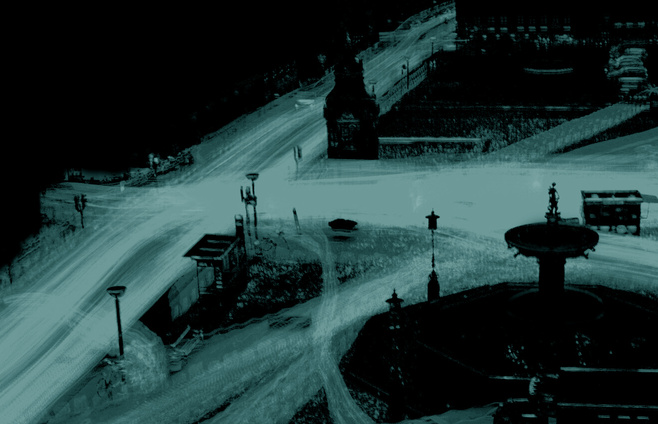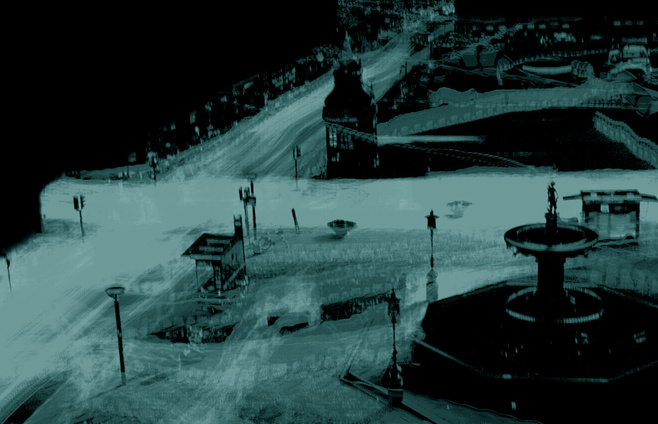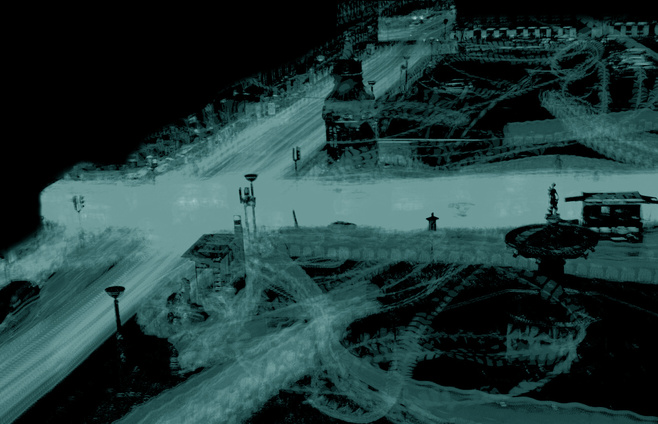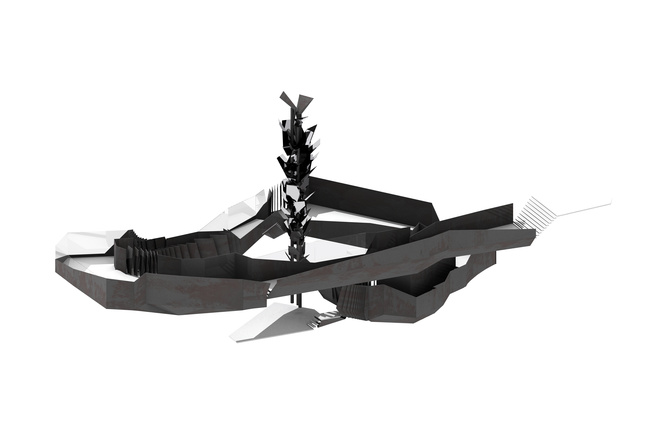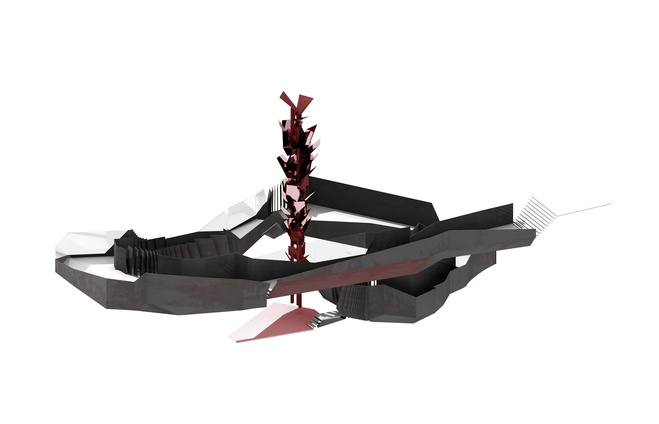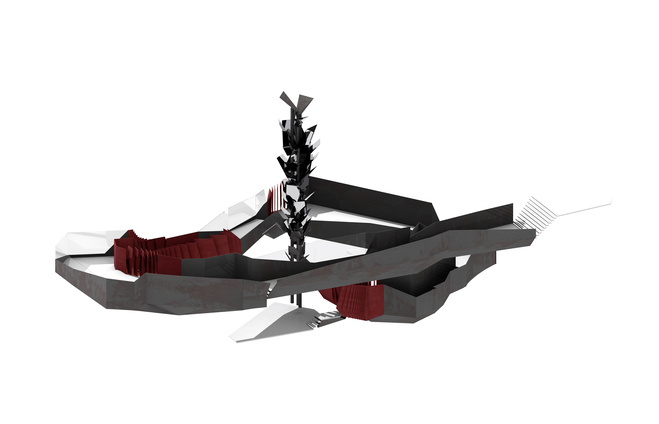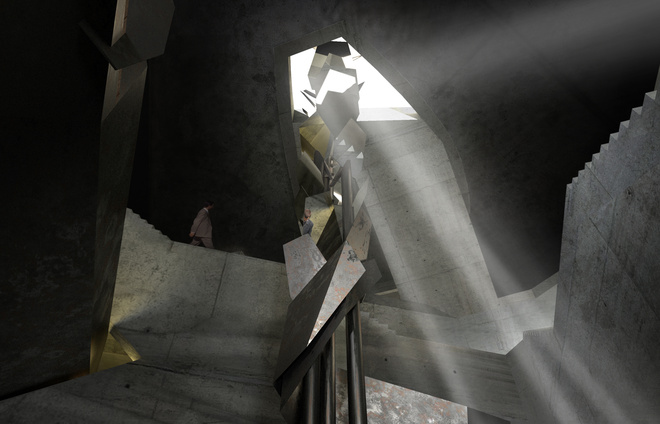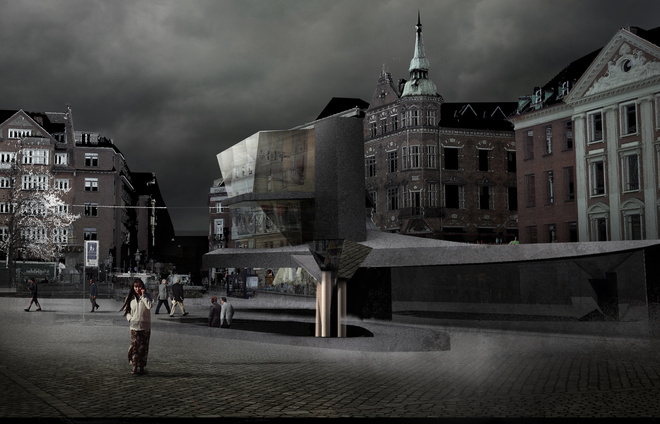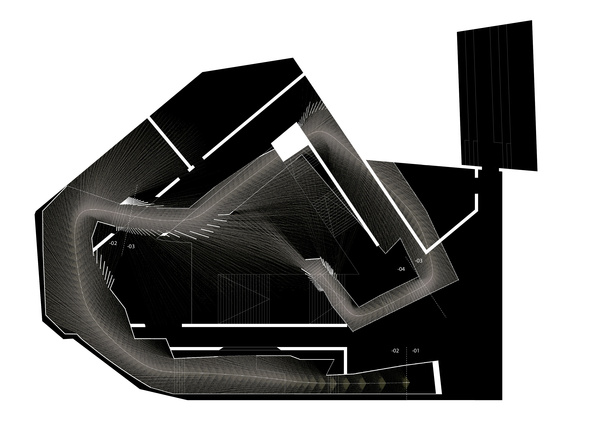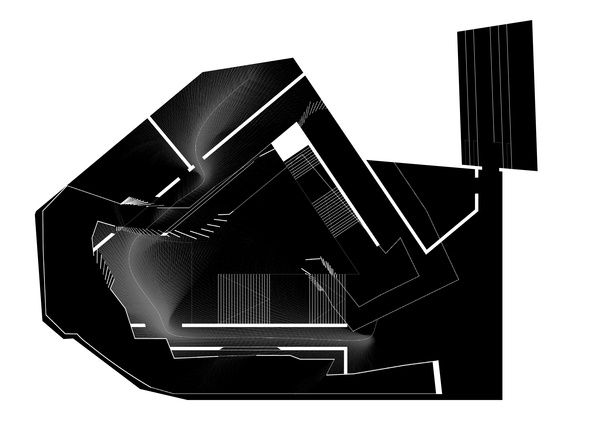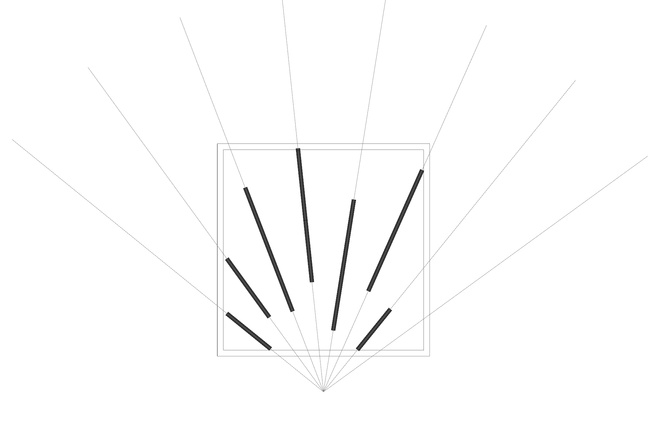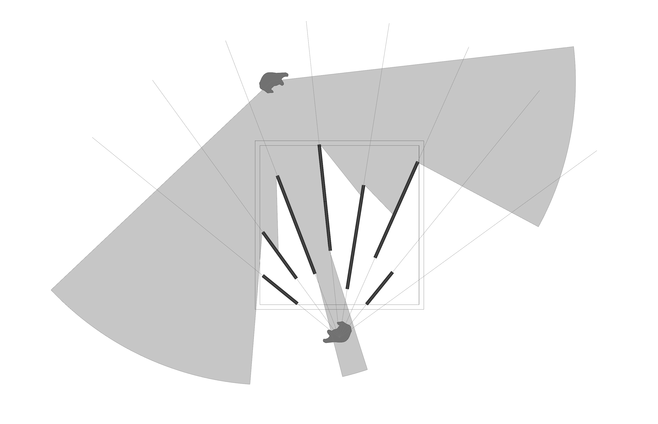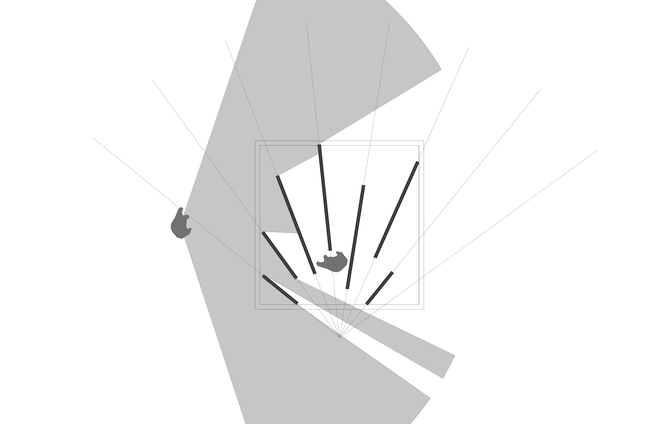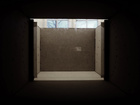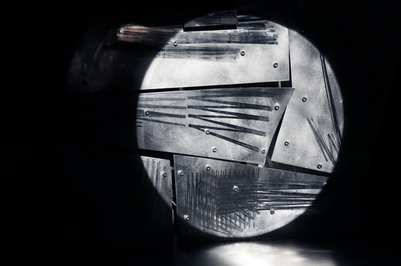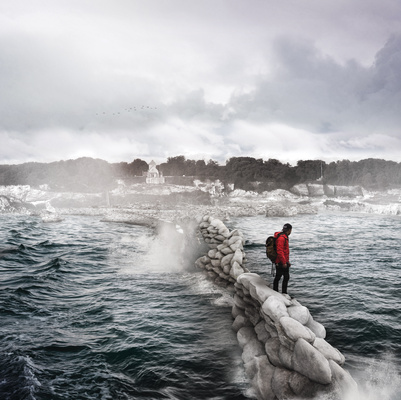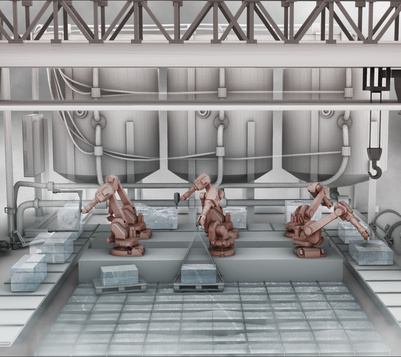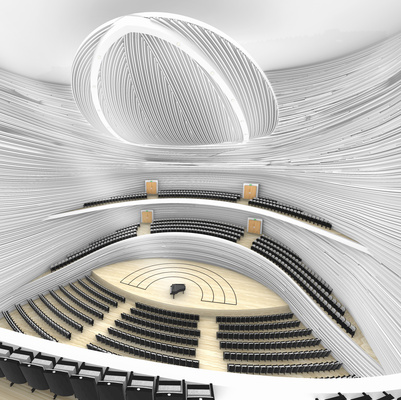Negotiating Visibility
Intro
This thesis seeks to reconsider our approach to privacy security in a time of mass surveillance and increasing digitalization.
It proposes a think tank to the discussion of future legislative privacy strategies and investigates how an analogue architecture can communicate abstract problematics of visibility.
The UN goal no.16 sets up two seemingly contradicting aims: 'Transparent Institutions' and 'The Right to Privacy'. One is concerned with revealing information while the other defends our right to conceal it. How can we set the balance and can architecture play a role?
Computer Vision
To document the movement on site I filmed the intersection between Strøget and Nytorv Street. Computer Vision then allowed me to extract moving elements from the video by comparing pixel change between the current and previous frame. Layering frames from a one-minute sequence then shows the flows and their intensities. The images below are recorded at different times on Wednesday, February 21st.
Situation Plan & Section
The Forum for Transparency lies partially underground peaking up through Nytorv. The building mass above ground is organized as rounded islands allowing for fluent movement through the area. The entrance is oriented towards Strøget inviting visitors in a seemless transition underground.
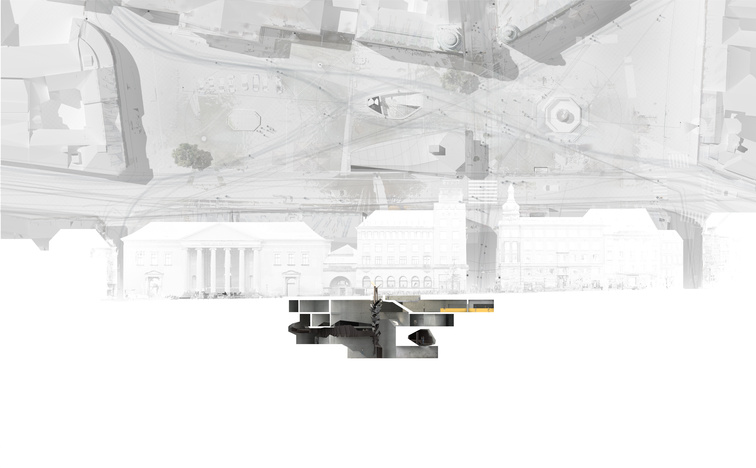
Visibility Strategies
An exhibition pathway runs through the other functions and programs of the building penetrating otherwise solid walls. This creates new degrees of exposure negotiating visibility inter-programmatically.
I am using three strategies:
Mirror Strategy - Extending Light
A mirror sculpture in the center of the building works both as a medium to let in light from above and to establish visual connections vertically.
Two periscopes operated from the bottom of the exhibition leap up and give the visitor a clear view of the two squares above ground.
Kinetic mirror planes allow for different views within the atrium and establish new views throughout the day.
Lamella Strategy
Alligning walls with the rays of a certain point of view creates a two-way visibility with a presence investment: visitors can only see others if they are visible themselves. However skewing ones own position can limit the scope of exposure.
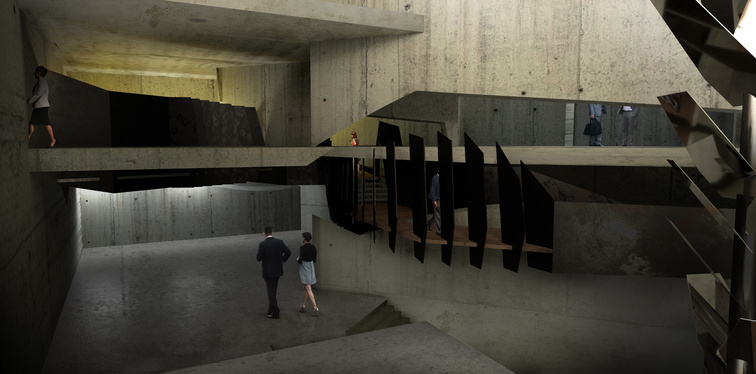
Glass Strategy - One-way Visibility
Visibility accross glass depends merely on light conditions on both sides. If a light imbalance exists being in the darker room allows one to look into the lighter room while transparency is limited looking into the darker room from the brighter one.
This phenomenon is played out in the facility where roles of surveillance shift as visitors move further into the exhibition.
